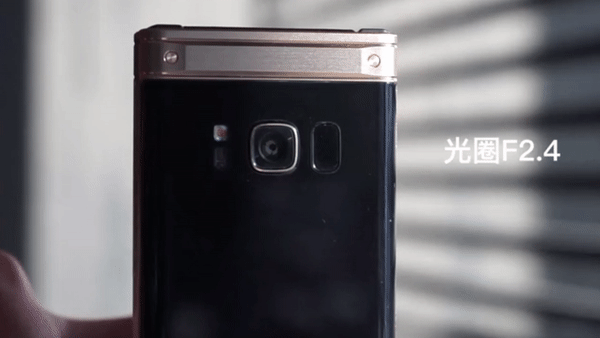The Samsung Galaxy S9 and S9+ have game-changing cameras with variable aperture and 960fps slow-mo video recording

"The camera, reimagined" – This is the line Samsung used to tease us with the upcoming Galaxy S9 and S9+, and for good reason.
Samsung's 2018 flagships boast improved cameras with many new features on board, such as variable apertures, slow motion video recording in up to 1000fps, and a dual-camera setup for the Galaxy S9+, which now sports a second, telephoto shooter in the vain of the Galaxy Note 8.
But alright, what's so special about them? Ultra slow-mo video recording? We've already seen that in the Xperia XZ Premium. What sets Samsung's newest flagships apart? Well, this would be the variable aperture that's available in the main cameras on both the Galaxy S9 and S9+. The aperture can go from from f/1.5 down to f/2.4, depending on the scenario, which is actually very important for recording high frame rate videos. That's because, when shooting at high FPS, the camera shutter needs to operate at an extremely high speed, which results in less light captured by the sensor. This makes shooting slow-mo videos in darker environments an exercise in frustration, especially when it comes to smartphone cameras.
Of course, shooting in the standard for many smartphone cameras slow motion modes—which vary between 120fps and 240fps depending on resolution—is not nearly the same as shooting at 960fps, which is what the S9 and S9+ can do. This sort of frame rate necessitates a much, much higher shutter speed, which in turn requires a lot more light to actually capture a good video. This is why having the wider aperture is so important – it lets more light in. But without further ado, let's get into the nitty gritty of it.
Improved low-light photography, sharper daylight photos

Variable aperture on the Samsung W2018 flip phone
The wider f/1.5 aperture comes into play not only when recording Super Slow-mo videos, but also when shooting in low-light. When the environment is not well-lit, a camera with a fixed aperture is forced to rely on ISO and shutter speed controls to ensure proper exposure of the scene. However, with Samsung's variable aperture, the Galaxy S9 and S9+ are able to switch between f/1.5 and f/2.4, depending on the scene, which should deliver better shots in low-light, but also sharper photos in well-lit environments, in theory at least. You see, the problem with wide apertures, despite all the perks, is that they could result in blurrier-looking photos due to lens aberrations. We're yet to take the S9s for an in-depth camera comparison, but what we've seen from the Samsung W2018 flip phone (which has the same variable aperture) would suggest that images do, indeed, get softer at f/1.5.

Crops of photos taken on the Samsung W2018 flip phone (left) and the Note 8 (right). Notice how the W2018 shot is softer at f/1.5. You don't want to shoot like that during the day, but it could be better for low-light photography. That's where the variable aperture comes into play
image source iTech
Stopping down the aperture can improve all-around sharpness throughout the frame, although loss of detail can also occur when stopping down to extremely small apertures like f/16 or f/22. That's called diffraction, but it's not something you'll have to worry about on the S9. Chinese outlets who got their hands on Samsung's $3000 W2018 flip phone also note that, when shooting at f/1.5, the image gets noticeably softer. However, since the phones can choose between apertures, depending on the light, this likely won't be a problem. And as far as low-light photography is concerned, when the aperture will likely open up to its widest, image clarity could be improved on a software level, which we know Samsung is good at.
The company told us that the new, variable aperture is capable of letting 28% more light than S8, and help produce shots with 30% less noise, which should play into how low-light shots turn out on the Galaxy S9 and S9+.
Shallower depth of field (a.k.a better bokeh)

Photo taken on Minolta X-700, Helios 44-3 @ f/2.0, Rollei RPX 400
F-stop numbers on smartphone cameras don't mean a whole lot when it comes to depth of field, unless you're really close to the subject. Reproducing the shallow depth of field from the photo above, which I took with an old Russian Helios lens at f/2.0, is currently not possible on conventional smartphone cameras, at this distance from the subject and through optics alone. However, a wider aperture can still be beneficial in other situations.
Alright, so bokeh is a big deal right now. It's been like that for a while in the photography community, but it's now getting popular on smartphones as well, thanks to the recent boom of "portrait modes" and the like. Unfortunately, however, the shallow depth of field that can be achieved on a dedicated camera — be it on a crop sensor, full-frame, medium format, or the various sizes of film available — is an impossible feat for smartphones due to physical constraints. That's why smartphone makers have resorted to software solutions to simulate an approximation of the shallow depth of field that can be achieved with a wide aperture lens on a large film plane.
Of course, smartphone cameras are still capable of producing a blurry background, when shooing from up close, but people are dreaming of artsy portraits where the subject stands out against a swirly backdrop of impressionist brush strokes. This isn't possible on a smartphone right now—through hardware means, at least—and won't be possible with the S9's f/1.5 aperture, due to the sensor and other limitations. However, it will provide shallower depth of field when taking close-ups. Not to mention that Samsung could further accentuate the effect through software means.
image source Sina
Super slow-mo video recording at 960fps
The so-called super slow-mo video recording is another stand-out feature of the Galaxy S9 and S9+. It allows users to record video in up to 960fps for a fraction of a second (0.2s to be exact), which is then stretched to 6 seconds to create a slow motion effect. Slow-mo is available at 720p resolution, much like on the Xperia Premium XZ, although the S9 and S9+ are capable of automatic motion detection, which picks appropriate part of the clip in slow-motion without you having to do almost anything.
This eliminates much of the frustration of catching a split-second of fast action on camera that Sony's implementation caused. And if you're not happy of the automatic slow-mo detection, you can always adjust it manually from the Gallery app. Other than that, the produced slow-motion clips can be shared normally, shared as GIF, or if you're particularly proud of your creation, you can set it as a lockscreen wallpaper, which play every time you wake the phone up.
This eliminates much of the frustration of catching a split-second of fast action on camera that Sony's implementation caused. And if you're not happy of the automatic slow-mo detection, you can always adjust it manually from the Gallery app. Other than that, the produced slow-motion clips can be shared normally, shared as GIF, or if you're particularly proud of your creation, you can set it as a lockscreen wallpaper, which play every time you wake the phone up.
Final words
The Galaxy S9 won't be the first ever smartphone to feature a variable aperture. The Nokia N86, for example, which launched in 2009, had a three-step variable aperture (f/2.4, f/3.2, and f/4.8), but as smartphones became slimmer and slimmer, manufacturers turned their back on technologies that demanded more room to be implemented (remember Xenon flashes?). However, with technology progressing and components getting smaller, we may now see some interesting concepts making a return.









Things that are NOT allowed: